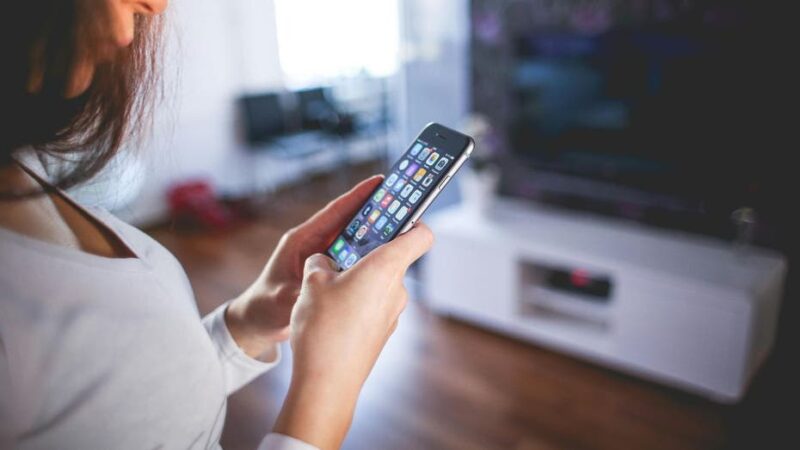Apple’s iOS Flaw Poses Stealthy Threats to iPhone Users

Understanding iPhone Security
iPhones have long been regarded as a bastion of security compared to Android devices. This reputation stems from Apple’s tightly controlled ecosystem and rigorous App Store guidelines that significantly mitigate the risk of malware. Additionally, Apple’s centralized approach to software updates ensures users receive timely patches, bolstering overall device security. On the other hand, Android’s open nature allows users to install apps from multiple sources, which can lead to inconsistent updates and increased vulnerability to attacks.
However, it’s crucial to acknowledge that iPhones are not impervious to security issues. Recent developments have highlighted a significant vulnerability within iOS, as detailed in Apple’s latest security advisory. This flaw has reportedly been exploited for over a year, prompting concerns over the safety of high-profile individuals targeted by hackers.
The Discovery of a Zero-Day Vulnerability
Apple has recently identified a zero-day vulnerability in iOS, which has been active for more than a year. This type of flaw is particularly alarming as it can be exploited by malicious actors before developers have a chance to release a fix. Apple confirmed that this is the first zero-day patch issued in 2025. The vulnerability impacts various devices, including iPhones dating back to the XS model from 2018, as well as newer iPads, Macs, and the Vision Pro headset.
This specific vulnerability, tracked under the identifier CVE-2025-24085, is rooted in Apple’s Core Media framework, which is responsible for handling multimedia files. A “use after free” memory corruption error allowed hackers to manipulate the system, executing unstable code and gaining elevated privileges to bypass built-in security measures. Reports indicate that these hackers may have disguised malicious apps as legitimate media players, exploiting the Core Media framework to trigger corrupted files and infiltrate targeted devices.
The Scope of the Threat
The attacks appear to have primarily affected iOS versions prior to 17.2, released in December 2023, suggesting that this vulnerability has been present since late 2022. Security experts speculate that hackers have specifically targeted high-value individuals, including activists, executives, and journalists, in an effort to remain undetected. The stealthy nature of this campaign highlights the ongoing challenges in identifying and neutralizing sophisticated, targeted exploits.
The Importance of Timely Updates
In light of this discovery, it is imperative for users to update their devices to iOS 17.2 or later, which includes critical fixes to protect against this actively exploited vulnerability. Apple has rolled out updates across its entire ecosystem, including iOS 18.3, macOS Sequoia, watchOS, tvOS, and VisionOS. Users are strongly encouraged to update their devices promptly to safeguard their information.
Protecting Your iPhone: Essential Steps
While Apple has addressed this vulnerability, it serves as a reminder that regular updates are essential for maintaining security. Here are seven key steps to protect your iPhone and iPad from potential malware threats:
1. **Keep Your iPhone Updated**: Regular updates are one of the most effective defenses against security threats. Always install the latest updates as soon as they become available.
2. **Download Apps Only from the App Store**: To reduce the risk of malware, only download apps from Apple’s official App Store, where a strict review process helps prevent malicious applications from being published.
3. **Enable Lockdown Mode**: For those at higher risk, such as journalists or executives, Lockdown Mode adds an extra layer of security by limiting certain functionalities to deter sophisticated cyberattacks.
4. **Utilize Message Filtering**: Activate built-in filtering settings to manage messages from unknown senders, making it easier to identify potential phishing attempts.
5. **Be Aware of Phishing Attacks**: Exercise caution when receiving unsolicited messages or emails, particularly those containing suspicious links or attachments. Consider installing reputable antivirus software for enhanced protection.
6. **Review Security and Privacy Settings**: Regularly check your iPhone’s security settings and app permissions to ensure that sensitive data is adequately protected. Enable Face ID or Touch ID for secure access, and activate two-factor authentication for your Apple ID and other accounts.
7. **Consider Data Removal Services**: To reduce your digital footprint, consider investing in personal data removal services that can help monitor and remove your information from various online platforms.
Conclusion: The Ongoing Need for Vigilance
The recent iOS vulnerability serves as a critical reminder of the necessity of keeping software updated. If you own an iPhone from 2018 or later, ensure that you have updated to iOS 17.2 or later without delay. The fact that hackers exploited a hidden flaw for over a year emphasizes the importance of vigilance in our increasingly digital lives.
Are you satisfied with how companies like Apple are protecting you from cyber threats? Share your thoughts at Cyberguy.com/Contact.
For more tech tips and security alerts, subscribe to my free CyberGuy Report Newsletter at Cyberguy.com/Newsletter.
Stay informed and secure!


